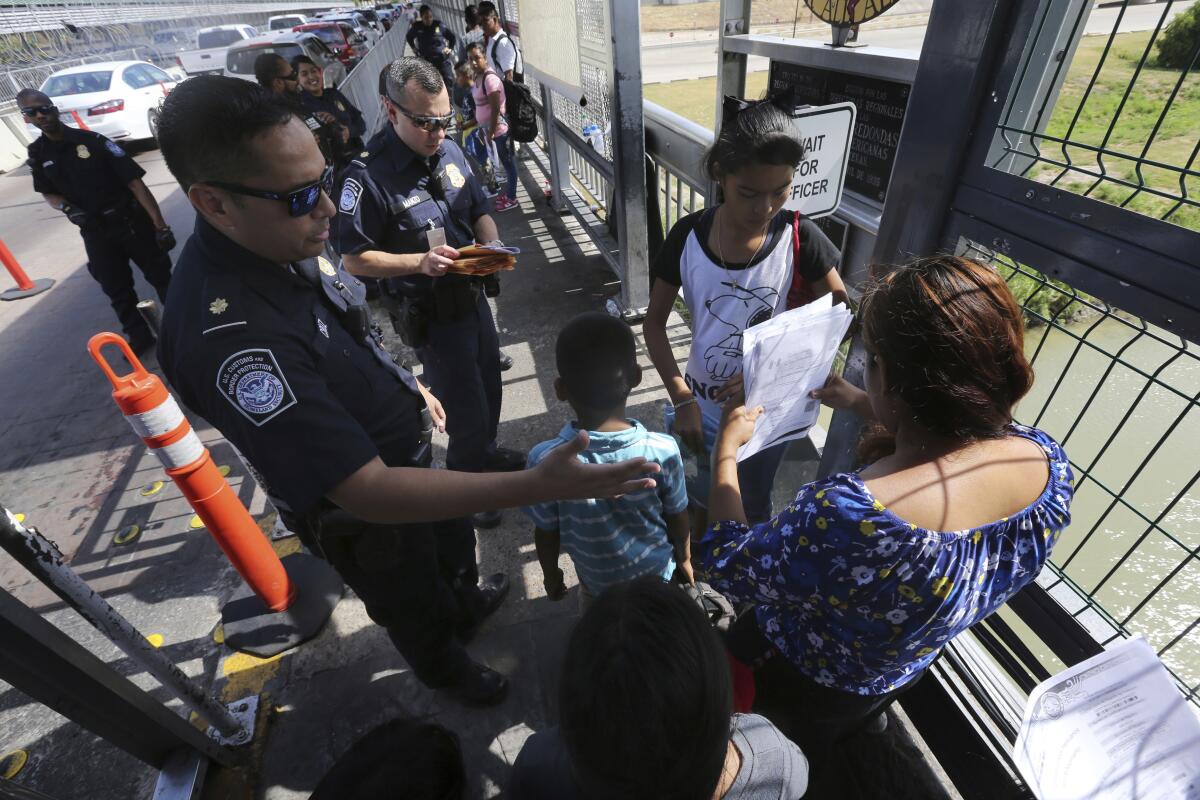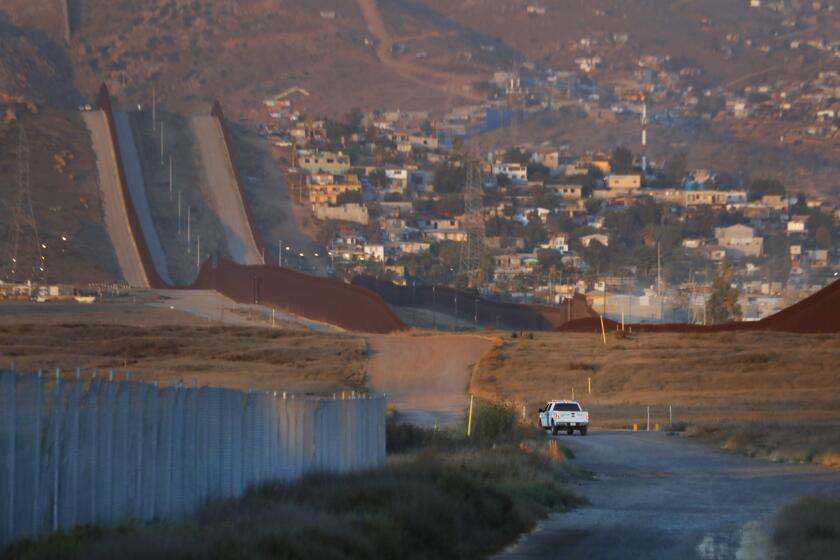Biden’s proposed asylum rules are a misguided attempt to deter migrants

- Share via
The Biden administration’s proposed rules for migrants applying for asylum would severely restrict people fleeing ravaged countries from seeking protection in the United States. The rules would limit who can apply for asylum by creating onerous requirements that would restrict eligibility at a time of historic global migration.
It’s a misguided, inhumane attempt to deter migrants from arriving at the U.S.-Mexico border that will make it harder, if not impossible, for asylum seekers to exercise their right to show up at the border and apply for refuge.
The Department of Homeland Security and the Department of Justice issued the guidelines last week ahead of the potential end of the use of Title 42, a Trump-era public health order that allows U.S. border officials to expel most migrants seeking asylum. The COVID-19 public health order ends on May 11, and with it, possibly the Title 42-based policy, which cited the threat of coronavirus as a basis for not allowing entry to migrants. Biden sought to end that policy but was prevented from doing so primarily because of legal challenges by Republicans.
The administration’s proposed rules would require migrants to first seek asylum in another country while en route to the United States, or to make an appointment via the CBPOne app, a U.S. government app that is riddled with problems. (It requires an appointment for each person, making it difficult for families, who then must decide to split up or wait indefinitely until securing slots for each family member.) Migrants who do not fulfill the conditions would be ineligible to apply for asylum in the U.S. The only exception would be for migrants who can show exceptional circumstances, such as a medical emergency or extreme and immediate threat to their life or safety, such as an imminent threat of rape, kidnapping, torture or murder. The guidelines are impractical for people fleeing persecution and effectively remove legal pathways for them to seek asylum.
Editorial: President Biden is using Title 42 against Venezuelans. That’s cowardly policymaking
The U.S. Department of Homeland Security cites pandemic-era health order to bar Venezuelans from legally applying for asylum. That’s disengenuous.
The Biden administration’s proposed rules would switch one inhumane policy with another despite the president’s promise to create a more orderly asylum process that wouldn’t cause needless human suffering. The United States needs to control entry at its borders, but it should do so humanely.
Under international law, people have a right to seek asylum if they fear persecution or harm in their home country because of their race, religion, nationality, political opinion or membership in a particular social group. The entire process of applying for asylum is rigorous, and approval can take years due to backlogged immigration courts. In 2022, U.S. authorities granted less than 14% of asylum applications. Those who don’t qualify for asylum can be deported.
The challenge for U.S. officials is to find a way to deal with an unprecedented number of migrants seeking asylum due to rising political and economic instability, particularly in undemocratic countries such as Venezuela, Haiti, Cuba and Nicaragua. Volatile conditions in those countries have driven migrants from their home, accounting for a large part of a historic 2.2 million border patrol encounters, defined as apprehensions or expulsions along the U.S.-Mexico border during fiscal year 2022. In comparison, Border Patrol had about 1.2 million encounters per year from fiscal years 1983 to 2006. These numbers decreased substantially between 2011-2018 to less than 400,000 encounters, partly as U.S. authorities increased border security.
The U.S.-Mexico border is a complex region not easily reduced to sound bites that sometimes turn out to be just myths — or convenient lies.
Certainly, Biden’s difficulty in dealing with security at the U.S.-Mexico border has been compounded by the surge of migrants. He inherited an immigration system hobbled by callous policies adopted during the Trump presidency that effectively shut the door to most asylum seekers and separated migrant children from their parents upon arrival in the United States, including Title 42. But he is now embracing a similar strategy of limiting eligibility with the proposed asylum rules. It’s a plan that largely replicates an asylum ban imposed by the Trump administration that was struck down by the courts.
Biden officials perversely cite the new rules, which would take effect after a 30-day period of public comment and expire in two years, as a form of deterrence, noting that Border Patrol apprehensions dropped once migrants got word that Title 42 was in effect. They say that these policies protect migrants by removing the incentive to travel to the United States but this reasoning ignores the fact that migrants will continue to attempt near-impossible feats to seek safe shelter and jobs.
Biden faces severe political pressure to effectively deal with the historic number of migrants at the border. Ultimately, it is up to Congress to pass legislation to overhaul a crowded, inefficient immigration system. Meanwhile, he can help create a more orderly system to process asylum seekers by expanding the capacity of border authorities to process arriving migrants and of immigration courts to handle cases quickly. That would be a more humane way to fulfill the country’s legal obligation to asylum seekers than summarily expelling them from the country or refusing to hear their case.
More to Read
A cure for the common opinion
Get thought-provoking perspectives with our weekly newsletter.
You may occasionally receive promotional content from the Los Angeles Times.











